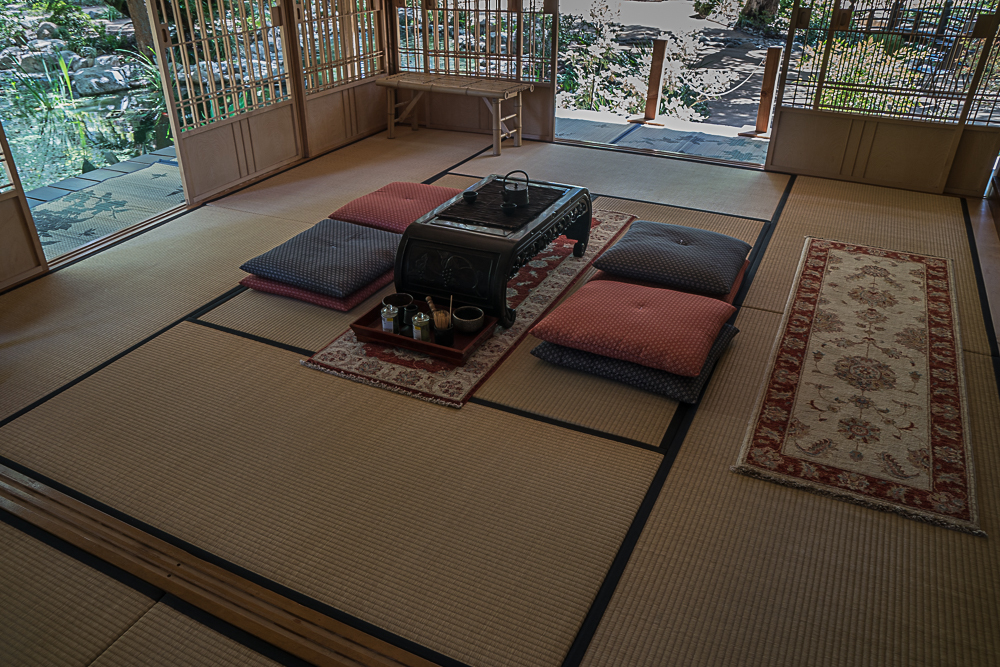I discovered the Storrier Stearns Japanese Garden by accident and now marvel at how often all those years ago I drove right past it while commuting to and from work. This private garden is tucked away on a side street not far from Wrigley Mansion, headquarters for the Tournament of Roses. I chose a perfect day to see it; on the morning of my visit, the dappled light darted across one of the pools. I love the reflections.
The garden was once the site of tennis courts at the home of Charles and Ellamae Storrier Stearns. Wealthy, educated and well-traveled people (Their trips to Japan may have been the catalyst for the building of the garden.) they hired Kinzuchi Fujii in the mid-1930s to replace the courts with a garden. He had already created a number of smaller Japanese gardens but this design was to be much grander.
He took his commission very seriously. I was told he brought specific rocks from the Santa Susana Mountains near Santa Barbara because he wanted a particular color, shape and texture. Personally I like the Korean or Buffalo Grass shown in the image below. It sparkled in the morning light and seemed to flow over the surface toward the path.
The garden was almost finished when in 1942 Mr. Fujii was sent to an internment camp along with so many other Japanese living in California at that time. He never returned to Pasadena after World War II. I don’t think he had the heart to see his garden again. Luckily for us and due to his careful planning, his workers were able to complete the last details.
Ownership of the garden changed hands in the intervening years. More troubles beset the garden as the State of California grabbed part of it to be used for a freeway, a project that still hasn’t been completed. Jim Haddad owns the land, or most of it now. He showed me around and told me the garden’s story. A few years ago he filed to have the garden declared an historical site. That and the cost of completing the proposed freeway should keep this garden safe for a bit.
Other obstacles confront Jim but he doesn’t seem to be the sort to give up on his garden. The original tea house burned in the 1980s but the new one was built using some of the salvaged pieces and as much authentic material as possible. It’s a lovely place.
Jim also uses his natural resources wisely. All the leaves and trimmings are collected and go into a huge compost collection. It lines the back drive. Each of the wooden “cabinets” is full of compost.
Water is managed too. Rain is collected and stored underground in a 10,000 gallon tank. The pools in the garden are managed so that water can be moved between them. It’s a very efficient system.
But there is always work to be done. And it’s done by hand. I was fascinated by two fellows moving a huge rock. There’s no room to bring in heavy equipment to shift the thing. They did it by hand, using small logs to roll it slowly down a hill.
Work is never ending and the need for funding is also a big problem. What the future holds for this small paradise is anyone’s guess. For my part I hope it thrives. It’s a special place.








